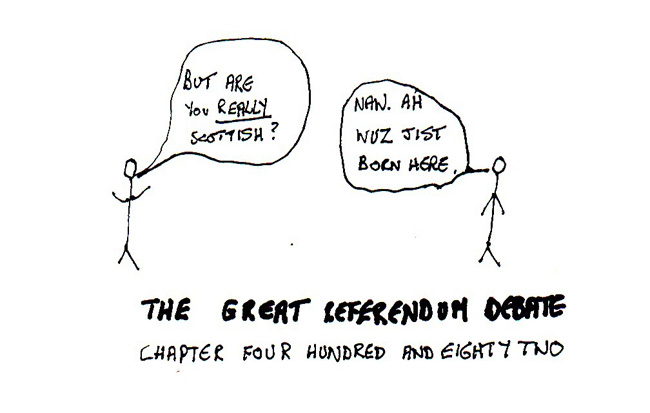November 24th
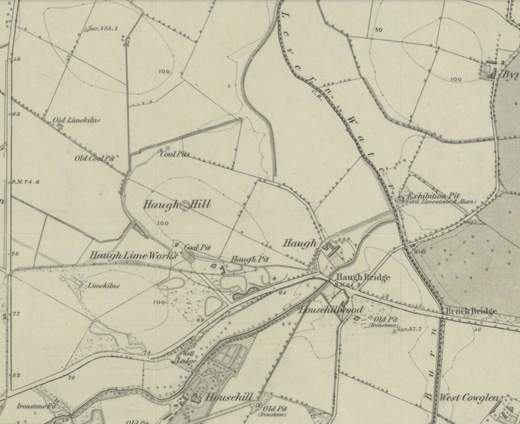
![]()
1858
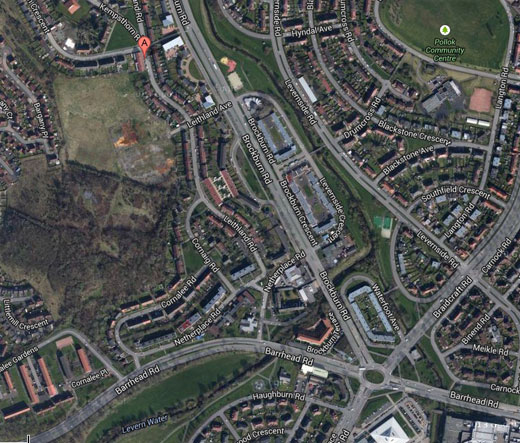
2013
From the back door in Leithland Road we looked straight into Leithland Road school and beyond it the hill named on the 1858 map here as Haugh Hill. The school has been demolished and its whole area levelled: Leithland Avenue led straight into the school and the light green levelled area can be seen in the photograph above.
The 1858 map shows there were then half a dozen pits in the area, all evidence of which long gone. When compiling Radical Renfrew I came across the poems of David Wingate who was born less than a mile from Leithland Road in Cowglen by the bottom right of the map here and who went down the pits when he was nine in 1837. Wingate’s first book of poems was published in 1862 and included his “The Collier’s Ragged Wean” whose form he based on a popular poem of the time called “The Drunkard’s Ragged Wean.” I have glossed some words at the end of the poem for people not familiar with the Scottish.
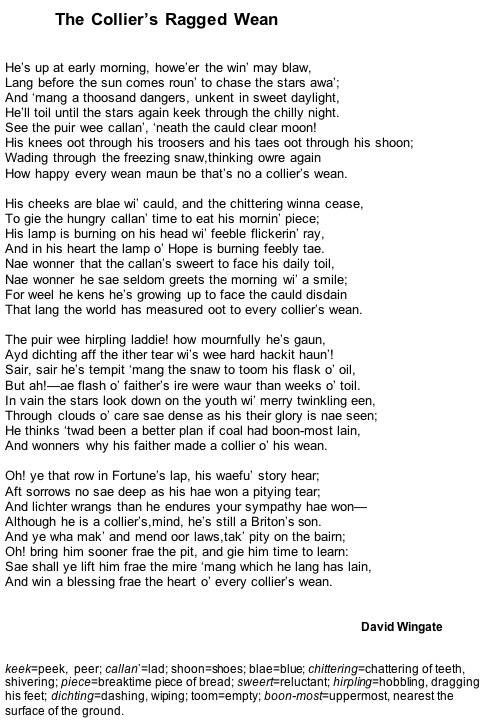
November 19th
Out the back door in Pollok.
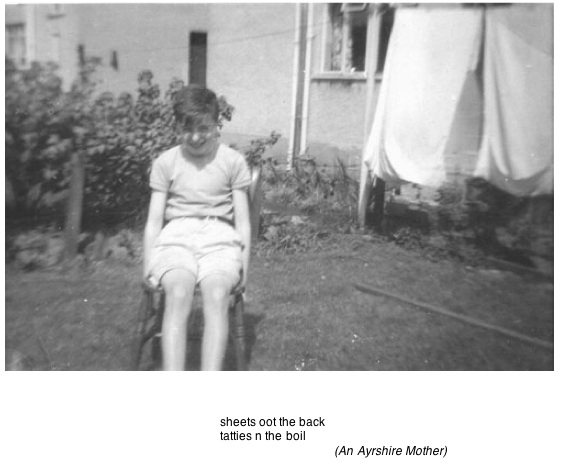
November 18th
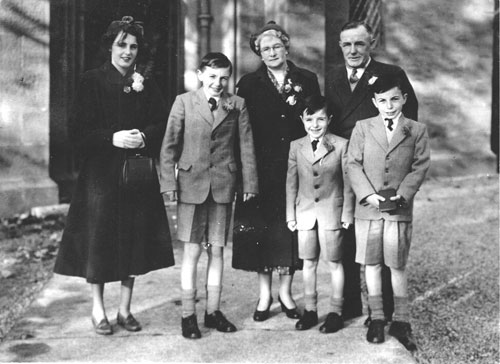
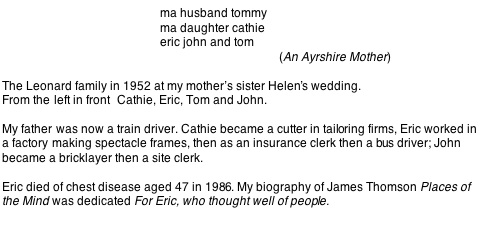
November 11th
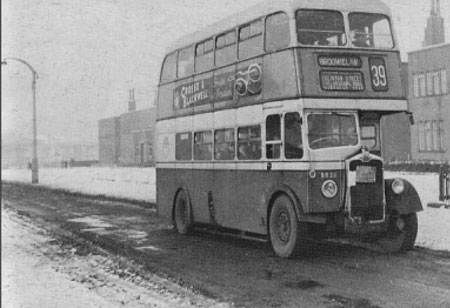
A 1950’s photo of a 39 bus on Brockburn Road approaching Pollok roundabout on its journey from Pollok to Glasgow city centre. The journey took about 25 minutes.
November 10th
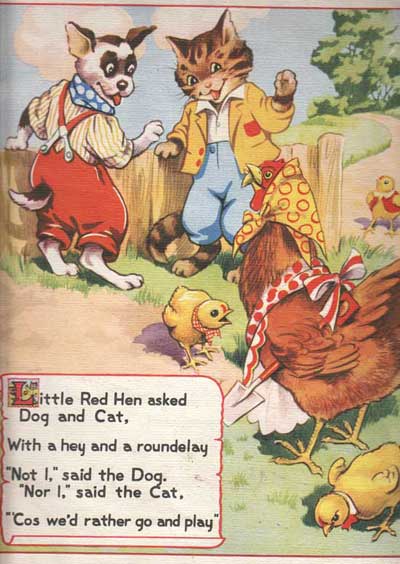
Page from a book given me as a prize in first year at primary school. My mother had it in a drawer.
November 8th
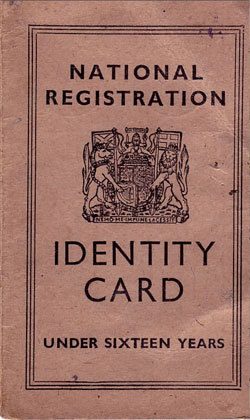
![]()
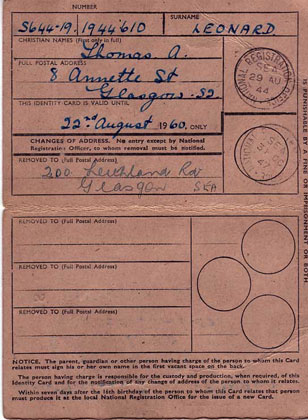

November 6th
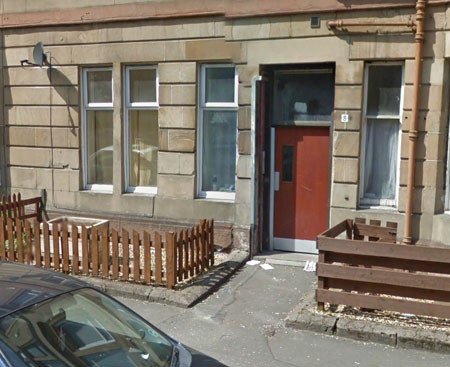
Ground flat left, the tenement in Annette Street where I was born. The night in 1944 there was a blackout because of the war. My sister Cathie who was eight was sent with a torch to get Mrs Melville the midwife. She went back to bed and in the morning, she tells me, the new baby was lying sideways wrapped up at the foot of our parents’ bed.
November 5th
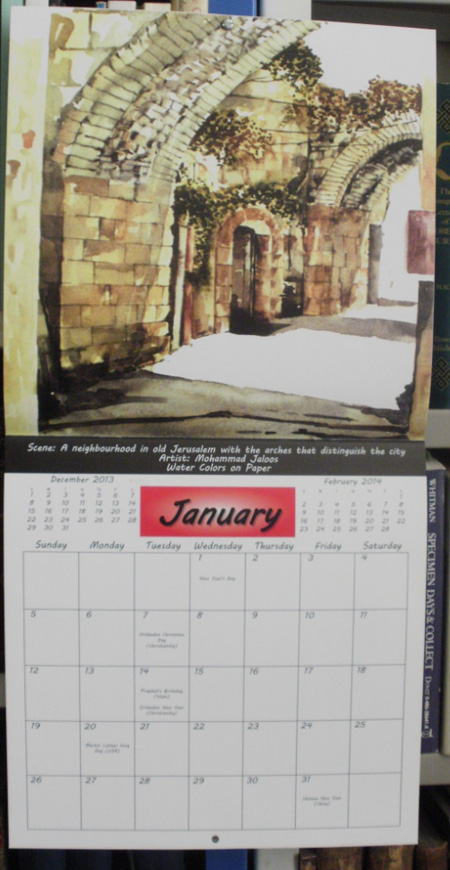

November 4th
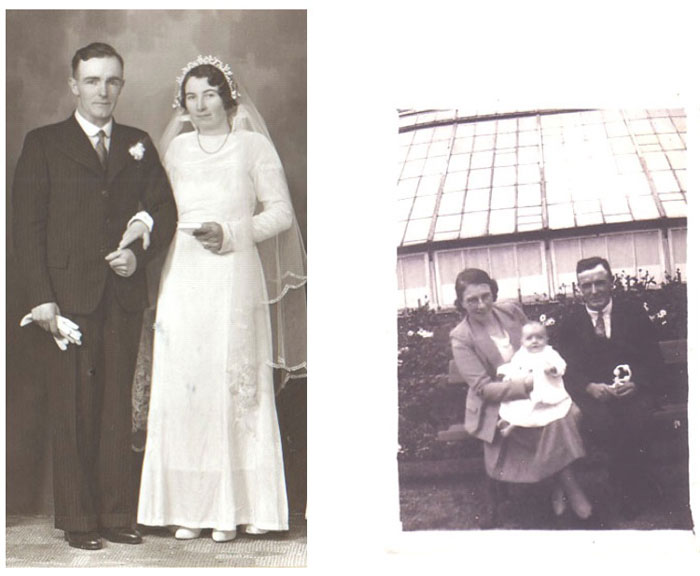
On the left my parents Thomas Leonard and Mary Mulgrew formally posed in the studio fashion of the time after their wedding in December 1934. The wedding was held in St Mary’s Saltcoats where my mother’s parents had been married 30 years previously.
On the right, photographed with their first child my sister Cathie born in March 1936. I think the photograph is taken outside the botanic gardens in Queens Park. They were now living in Govanhill in Glasgow, my father working from Polmadie railway yards nearby as a fireman on the steam engines. Polmadie served the routes from Glasgow Central station south to Ayrshire and to the border at Carlisle.
November 1st
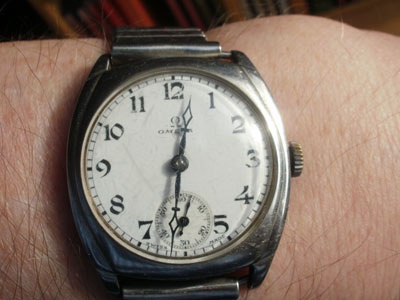
![]()
October 29th
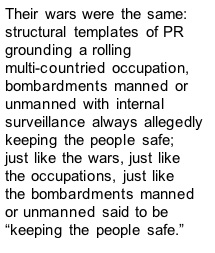
October 26th
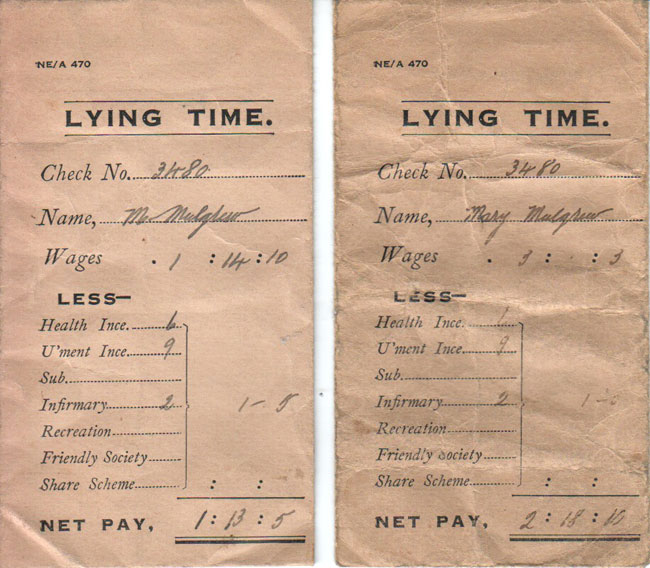
My mother’s final wage packets from the Ardeer dynamite factory. She left the factory for her marriage in 1934, and used to say these packets were the last things she signed for in her own name. After that the only money she signed for, and in her married name, was for the weekly Family Allowance after her children were born.
When you started work you would work a fortnight before you got one week’s wage, and when you finally left employment you would get your last week’s wage plus the “lying time” of the spare week carried forward from the beginning. That there were two packets suggests there might also have been eg unpaid overtime or money in lieu of annual holiday amount due but not yet taken.
October 25th
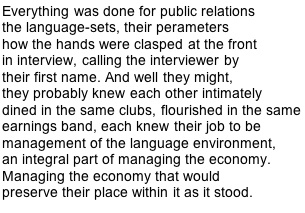
October 19th
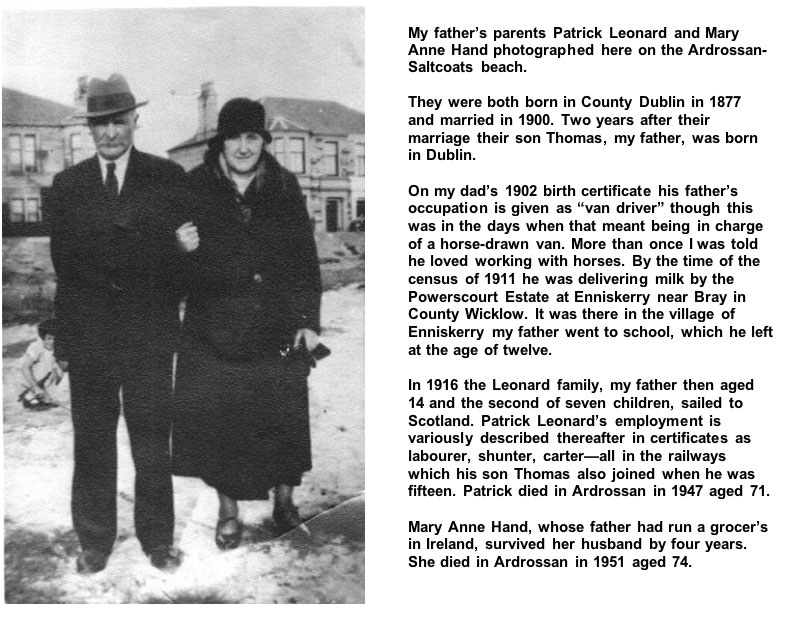
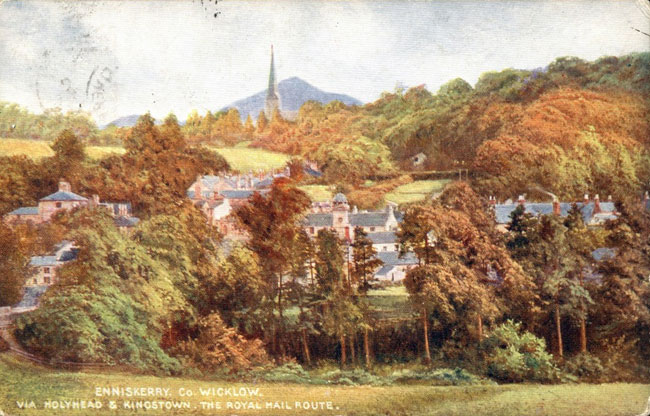
The village of Enniskerry County Wicklow. The postdate on the reverse of this postcard is April 1911.
October 16th

October 13th
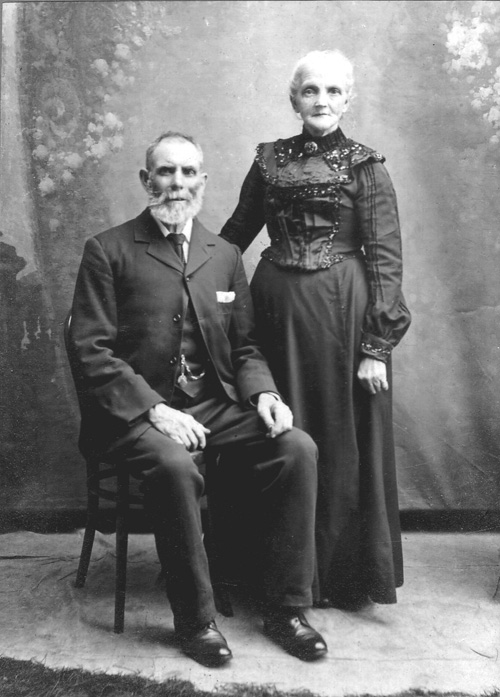
A John Mulgrew was born in Ireland in 1796 son of Thomas Mulgrew a handloom weaver. John came to Scotland working as an agricultural labourer, and married an Irish woman Sarah Waters fourteen years his younger. In 1850 in Wishaw they had a son they called John after his father. That's the John Mulgrew, my mother's paternal grandfather, seated above. The woman beside him is Bridget Fearon, the Irish farm servant he married in 1876.
He worked as a steamship stoker though he also had spells as a coal miner and as a worker in the Ardeer dynamite factory by the end of the nineteenth century. His wife Bridget was 77 when she died in 1924. He died in 1932 aged 81.
October 11th
This Tuesday 15th I am reading in
the early evening at the Looking Glass Bookshop in
Edinburgh just off the Meadows at 36 Simpson Loan.
October 9th
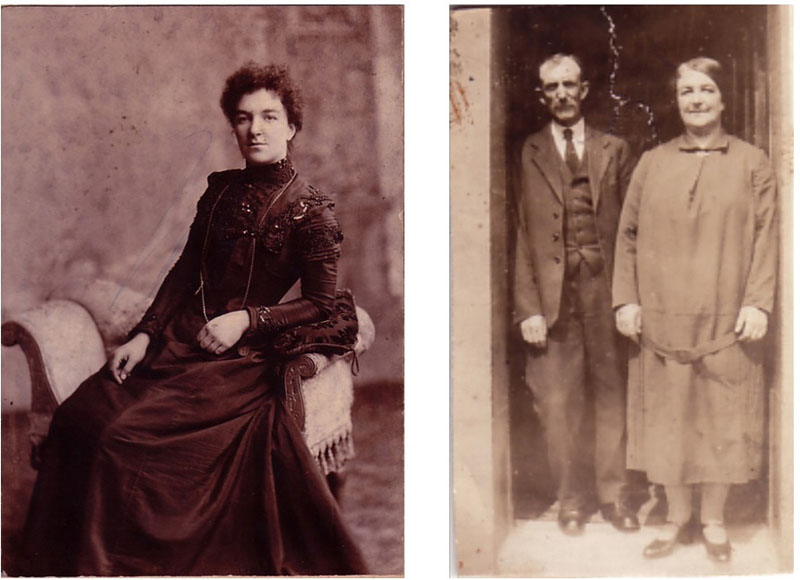
My mother’s mother Catherine Reilly on the left as a young woman, on the right in her age as a mother of a large family and married to my grandfather John Mulgrew with whom she is photographed in their Saltcoats doorway.
Catherine born in 1878 in the Newry area was the daughter of Mary McConnon and John Reilly a shoemaker like his father Patrick before him. She and John Mulgrew were both employed at the Ardeer dynamite factory at the time of the 1901 census three years before their marriage. She died aged 70 in 1948.
John was born in 1878 in Saltcoats and died there in 1940 aged 63. He had taken early retirement at 60 and his death certificate described him as “explosives works foreman retired”.
October 7th
Around me on the terracing people belting out: It was on a dreary new year’s eve as the shades of night came down. A lorry load of volunteers approached the border town. There were men from Dublin and from Cork, Fermanagh and Tyrone. And the leader of that gallant band, Sean South of Garryowen.
It was all Tantum Ergo saeculorum to me. Your cheatin heart will set you free
October 4th
